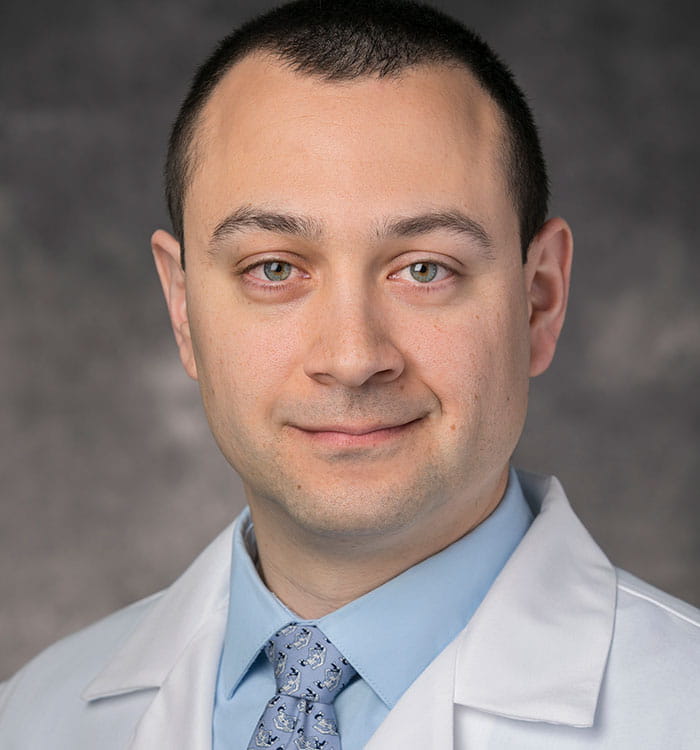Specialist Spotlight: Benjamin Silver, MD
July 14, 2019
UH orthopaedic surgeon offers cutting-edge care in a small-town setting
UH Primary Care Institute News | Summer 2019
 Benjamin Silver, MD
Benjamin Silver, MDFor UH orthopaedic surgeon Benjamin Silver, MD, operating at UH Geauga Medical Center offers the best of both worlds.
“UH Geauga has a small-town feel, but with very high-level medicine,” he says. “You get to know everyone who is working there on all the different units, which is really nice. But there is the level of sophistication to do very complicated cases and very demanding, technical things.”
Dr. Silver specializes in total joint replacement and complete reconstruction of the adult hip and knee.
“I do a wide variety of cases,” he says. “I take care of a good number of patients who have straightforward problems with the hip and knee. But it’s well-balanced with patients who have more complex problems, such as those who’ve had a previous surgery and may have retained hardware and people who’ve had mechanical problems, infections or fractures around an implanted device. I do all of those things – the whole spectrum.”
Dr. Silver earned his medical degree at New York University School of Medicine. Following residency training in orthopaedic surgery at University of Texas Southwestern Medical Center in Dallas, he completed fellowship training in orthopaedic adult reconstruction and complex hip and knee replacement at Allegheny General Hospital in Pittsburgh. Still in his first year at UH, Dr. Silver sees patients at the UH Geauga Specialty Clinic, as well as UH Concord and UH Hudson health centers.
Two of Dr. Silver’s special areas of expertise are minimally invasive muscle-sparing total knee replacement and direct anterior total hip replacement.
“There are several different surgical techniques for approaching the knee,” he says. “All are fairly similar, but for many patients, we try to do as little damage to the muscle as possible, while still getting the visualization of the joint we need to position the components. There are certain techniques we can use to keep as much muscle attached as possible.”
“Direct anterior total hip replacement is a newer technique that allows us to do hip replacement by separating the muscles along their natural planes without having to detach any muscle from bone,” he adds. “One of the benefits is a faster functional recovery and improved pain control in the very early post-operative period. It’s not possible for every patient – some people have a more complicated deformity or the body just isn’t amenable to it, but it can be an excellent option for some patients.”
In all his dealings with patients, Dr. Silver says he goes to great lengths to lay out all such options.
“The key to the patient experience, especially in total joint replacement, is making sure patients have a really good understanding of their options, both operative and non-operative,” he says. “It’s important that patients feel comfortable that they can make the decision for surgery in a low-pressure environment, with all the information about the risks and benefits at their disposal.”
According to Dr. Silver, total joint replacement is well on its way to becoming an outpatient procedure.
“The majority of our patients go home after one night in the hospital,” he says. “Some people can go home the day of surgery. We are working toward outpatient total hip and knee replacement.”
He credits the movement toward medical optimization before surgery and multimodal pain management as fueling this development.
“Alternatives to opiates, including other medications, regional anesthesia and spinal anesthesia – all these things together are allowing us to get patients up and moving with minimal pain and home faster and back to functioning more rapidly,” he says. “Years ago, we use to give people a lot of IV opiates. Now most people will get no IV opiates after surgery. We have a whole collection of techniques that we can use to reduce opiates and reduce the side effects that they have.”
For more information about Dr. Silver or to refer a patient, please call 440-285-5004.
Tags:


